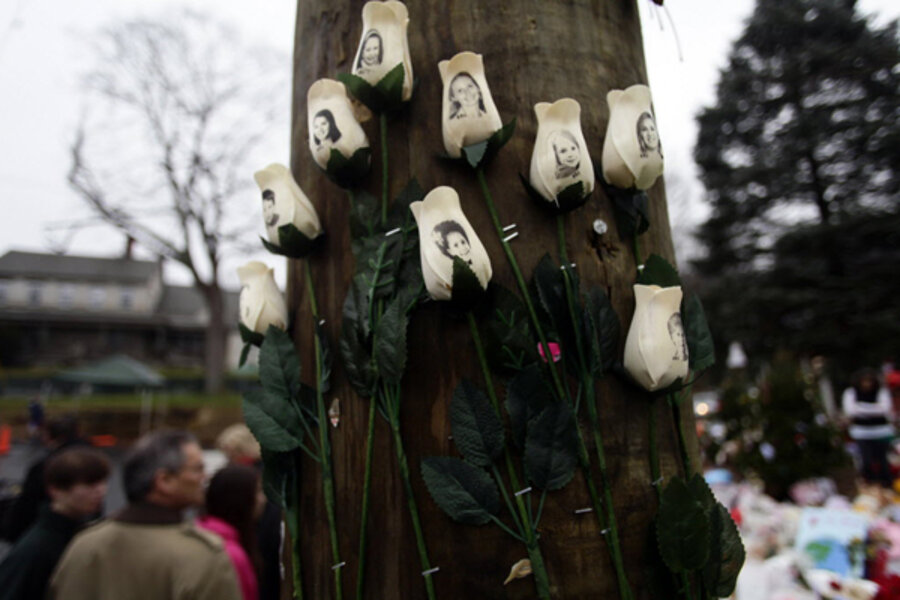Sandy Hook: Motive still a mystery as community holds first funerals
Loading...
| Newtown, Conn.
Police in Newtown, Conn., have "solid evidence" that may help to explain why a socially withdrawn 20-year-old named Adam Lanza brutally murdered 20 children and six women at Sandy Hook Elementary School on Friday. Yet it’s likely to take "months" for a "crystal clear picture" to emerge, Connecticut State Police Lt. Paul Vance told reporters Monday.
"I know that the people of Newtown want to know what happened, but our intent is to paint a crystal clear picture and that's not something that can be done in 60 minutes," said Vance.
The question of motive is a major barrier, locals say, for a stunned, grieving community that was struggling Monday to understand Lanza's act as it began to bury its slain children.
The central unanswered question – why? – took on national import, as well, with polls showing that Americans, for the first time following a mass shooting at a school, saw the Sandy Hook massacre not as an isolated incident, but as evidence of something dark, troubling, and wrong in US society.
"As parents, we come to realize that we bear responsibility for every child, because we're counting on everyone else to help look after ours," President Obama told an interfaith vigil at Newtown High School late Sunday evening, sounding a similar theme. "By that measure, can we truly say, as a nation, that we're meeting our obligations? … If we're honest, the answer is, ‘no.’ "
At the same time, the lack of police data about Lanza's state of mind has only fueled speculation about Lanza's life – with his wealthy, survivalist mother; a mental disability, Asperger syndrome, that makes social cues hard to read; and a secluded life of video games and range shooting – and whether these factors, in total, played some kind of role in pushing the troubled young man to a ragged edge.
Counselors tried to explain more generically that the massacre was, as one said, "an angry, desperate act of a confused young man." Yet criminologists say that another reason why motive is important to understand is that major US school shootings usually take place in places very much like Newtown: upper class, tight-knit, and where young people may have a single shot at acceptance or social failure at school. That means the root cause of the massacre may involve others, as well, or the attitude of an entire community toward someone who did not fit in.
"We may never know exactly what motivated this killer, but I have to say he doesn't look that different from other school shooters except the fact that he was trained in use of firearms by his mother, he targeted young children, and also that he didn't target current classmates," says Northeastern University criminologist Jack Levin, who has written about the history of mass killing in the United States.
"Just like other school shooters, he was an outsider in a tight knit community where he was seen as a geek, a nerd, and he also externalized the responsibility for his misery,” says Mr. Levin, co-author of last year's "The Will to Kill: Making Sense of Senseless Murder."
“He was on a suicidal rampage, but he wanted to get even with society at large. It wasn't any particular individual, it was all of humanity. Thirdly, like other school shooters, it's not clear that he had any place to turn to when he got into trouble."
Vance, the state police lieutenant, told reporters Monday that a large team of forensic specialists from federal and state law enforcement bureaus were working around the clock to collate clues from hundreds of interviews and tease out information from computers seized at the family's Sandy Hook home, where Lanza shot his mother before embarking on the massacre.
Lanza's motive is "a big outstanding question, but we don't want to put anything out now that's going to mislead people from the truth," the state trooper said.
Trying to explain what seems inexplicable will be difficult to do, even if Lanza's profile bears similarities to that of other infamous child-killers.
His motive "is an abstraction, and there's symbolism in it" that police are now struggling to understand, says Levin.








